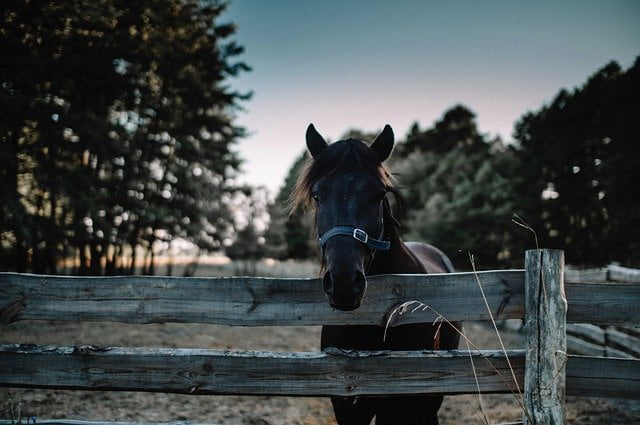
Lice infection in horses
There are two main types of lice: the type that feed through biting, and the type that feed through sucking. Lice are small flat-bodied insects. They may be only 2-4 millimeters long and fully developed, making them difficult to detect early in the infection. They are nourished by the waste products emitted from the skin as well as the body fluids that can be extracted from it. They breed in the thicker coats that horses grow during the cold winter months and live in different areas of the horse’s body, from the coat to the mane of the tail.
Horses and donkeys may be infested with two types of lice, Haematopinus asini (H asini), the horse sucking louse, and Damalinia equi (D equi), the horse bite louse. Both types are in worldwide distribution. Typically, H asini is found at the roots of the forelock and mane, around the base of the tail, and on the hair just above the hoof. D equi prefers to lay eggs on fine body hairs and is found on the sides of the neck, sides and base of the tail.
Lice are flat, wingless insects, usually 2-4 mm in length. The claws of the legs are adapted to cling to hair or feathers. Mallophaga possesses ventral chewing mandibles and feeds on skin products, especially skin scales and rind. Malovagan cape is wider than Prostorax. Anoplura is a blood feeder. When not in use, the patterns of their mouthparts are pulled inside the head.
Lice eggs or nits are attached to the hair of mammalian hosts near the surface of the skin and are pale, translucent, and semi-oval. The three stages of nymphs, of increasing size, are smaller than adults but similar in habits and appearance. About 3-4 weeks are required to complete one generation, but this varies for different species.
Symptoms and types
Lice are manifested by itching and irritation of the skin with scratching, rubbing and biting in the affected areas. Generally unrestrained appearance, coarse coat, and low production in farm animals are common. In severe cases, there may be hair loss and localized scratches. Severe infestation with sucking lice can cause anemia.
- There are two main types of lice, namely:
- biting lice
- sucking lice
- Symptoms of a lice infestation include:
- loss of glossiness of horse’s coat
- Hair loss from the neck
- Hair loss from the shoulders
- body hair mat
- The mane and tail become tight
- itchy skin
- Friction with poles, walls, etc.
- biting into the skin
- Loss of condition in more severe cases
- Anemia caused by continuous blood loss occurs in the most severe cases
- Lice can be seen on the surface of the skin
the reasons
Less healthy horses are more likely to have severe lice infestation. Areas where large numbers of horses are kept together are considered breeding grounds for lice and will increase the likelihood of any horse infestation, even the healthiest of them. The course is short, with the nits set on the hair and hatching within ten days, usually a short enough time for the condition to go completely unnoticed.
diagnose
A vet does not need to be called to diagnose lice, but it may be a good idea to consult a vet when it comes to spotting and treating lice. It is often helpful to have some background information when it comes to dealing with lice, because those who don’t know what they are dealing with may not stand much chance against them when it comes to getting rid of them.
Diagnosis is based on the presence of lice. The hair should be separated and the skin and the part near the coat should be checked with the help of light if it is inside. The hair of large animals should separate from the face, neck, ears, top line, dewlap, coat of arms, base of the tail and key of the tail. The eggs are easily visible on young animals. Sometimes, when the coat is entangled, the lice can be seen when the lump has broken off. Lice are activated by lice and can be seen moving through the hair. Sucking lice usually move more slowly and are often found with mouthparts embedded in the skin.
treatment or treatment
Shearing the coat is the best first step in treating lice in horses. This is because the longer the coat, the more welcoming the lice – and this is a great way to discourage them from migrating and breeding on your horse. The thicker the coat, the greater the number of lice; This is why the winter months are the best time to breed in large numbers.
Lice should be treated every two weeks because the life cycle is very short; Less frequent treatment can give the lice enough time to regrow in numbers and become a problem again. Insecticide medication may be the best method of treatment. A type of lice-killing powder can also be used to dust a horse’s fur and kill parasites as well.
Living and Management
Keeping your horse clipped when possible is a good way to slow down lice. It is also important to make sure that the treatment is taken often enough so that the lice have been eradicated.



